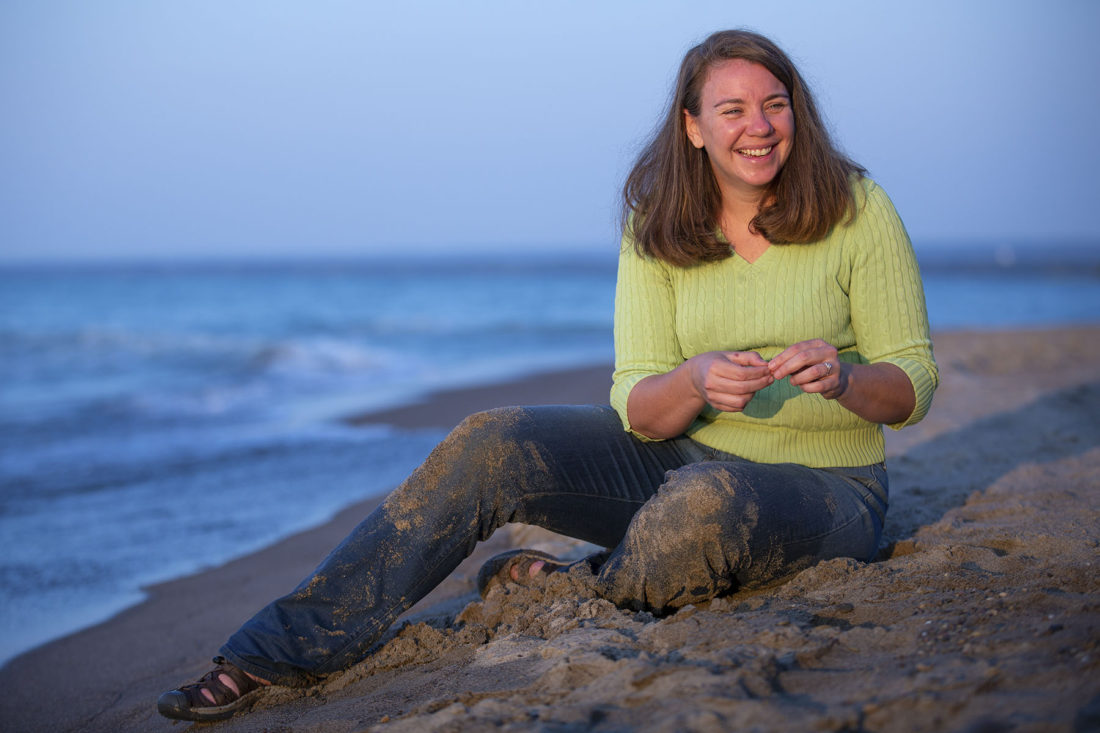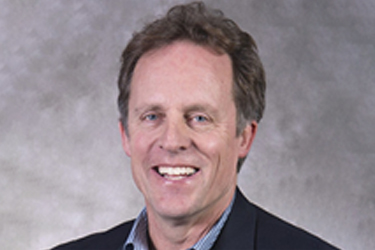Nebraska Hernandez, Graduate Student in Geography, Environmental Justice Intern – “Mapping a Just and Sustainable Future for Pennsylvania”
Nebraska Hernandez is a graduate student in geography at Penn State and a current environmental justice intern at the sustainability institute. He works with Nyla Holland, another Penn State graduate student and environmental justice intern, and Peter Buck, academic programs manager at the Sustainability Institute. Using his expertise and experience in geography and GIS (geographic information system services), he worked on a project called “Mapping a Just and Sustainable Future for Pennsylvania” that displays the economic, racial, and ethnic inequalities in the impacts of climate change and environmental injustice.
How did you get involved with sustainability while you were in school?
When I took my first geography classes, I knew about the concept of sustainability, but I feel like people think of sustainability as like not using plastic straws or carpooling, which are important parts of sustainability, right? Individual actions. But taking a geography class and looking at how sustainability is ingrained in more than just little things, but also in structures and systems, was really interesting.
Why is sustainability important to you personally?
As an individual I feel I have a responsibility to other people and to the Earth to be cognizant of conserving resources, trying to limit waste, and limiting consumption in general, especially as we are in a climate crisis. I see it as an individual and communal responsibility.
How does geography intersect with sustainability?
I think that geography has an inherent connection with sustainability, especially human environment or human geography. Specific sections of geography are very in tune with sustainability. I think it’s more about how geographers and geography as a field can contribute and interact with the right types of sustainability. So, I read this article about “just sustainability” that positions sustainability more in tune with environmental justice. I think Geographers should be applying the knowledge that they have to just sustainability. Because a lot of sustainability now is kind of a greenwashing campaign to say “Oh, if you turn the water off when you brush your teeth, you will save the water.” But it’s bigger than that. I think geographers contributing their knowledge about maps and spatial connections could help with that.
How did you get involved with becoming an Environmental Justice Intern and what drew you towards it?
I got involved with sustainability and environmental justice initiatives because I met Peter Buck the summer between my sophomore and junior year at project drawdown, a research experience for undergrads and I was involved in. Since I had GIS expertise as a geography major, he asked me if I wanted to interview for a job to create this environmental justice map. So, it was through him that I got involved with the Sustainability Institute.
What did you do for project drawdown?
For Project Drawdown I was part of an 84-person research team that worked with a professor named Dr. Sexsmith who is a professor of rural sociology. We looked at Project Drawdown’s “Women Smallholders Solution,” one of the many solutions proposed by Project Drawdown for combating climate change. We critiqued Drawdown’s model because we believed that they were putting even more of a burden on women that already disproportionately impacted by domestic labor in the house. Adding onto them having a farm just wouldn’t work out. We also found that if you give women microcredit or loans, most of the time, the men and the household will take that money and then use it for other things. So we got to critique Women Smallholders Solution and found that they should just eliminate it and have gender analysis and approach to every single solution that they have instead. Because each of those have gender, racial, socioeconomic lenses that they have to be viewed through.
Could you introduce the Mapping a Just and Sustainable Future project? What is the goal and what do you hope the impact of it is in the future?
The goal is that the environmental justice map is used by community groups or even at the government level to identify sites of environmental injustice and environmental racism in Pennsylvania. Obviously because within Pennsylvania and you have certain populations like black people, Latinx people, or more rural people that are disproportionately impacted by pollutants that have negative health outcomes. To frame it in something very relevant, that kind of pollution disproportionately impacts people’s bodily response to coronavirus. So, having a map that can identify “Oh, in North Philly there are black and Puerto Rican neighborhoods that are disproportionately impacted by diesel emissions. This has a negative health impact on respiratory systems, which places this population at a higher risk of developing coronavirus.” So, Nyla and I hope is that it identifies and rectifies injustices such as that and it also spurs further research.
What do you do as an environmental justice intern?
It started out early in the project as developing a methodology for the Mapping a Just and Sustainable Future project. And then we met with different stakeholder groups and different experts in environmental justice and environmental justice mapping. We met with people from the Department of Environmental Protection from Pennsylvania, Department of Health, and people from the EPA. Then, we met with researchers from the University of Washington who had developed an environmental justice map. So, step 1 was essentially developing methodologies. Step 2 was gathering the data and identifying indicators, and then 3 was actually mapping it. Right now we’re in the final stages. So, we have all of these static maps. They’re not dynamic or interactive, but I’m creating an online dashboard right now, working with Nyla, to have more interactive so you can enter in an address and then see 13 environmental or socioeconomic indicators at that census block group. So right now we’re in the final stages.
So, you mentioned that you notice the pattern of environmental issues affecting communities of color more. Were there any other patterns that you realized?
I think one of the most interesting things I found for my thesis that I wasn’t looking for originally was patterns of racial and ethnic minority percentages in the population. When I mapped at the census block group level, I found census block groups in rural Pennsylvania that had really high percentages of racial and ethnic minorities that made no sense. There were census block groups in northern PA where there’s five people and there’s a forest with these values. So, I thought to myself, what is in this census block group that’s making racial and ethnic minority population higher? I stared at it for about two days with no idea what was going on. I was searching each census block groups and what I realized was 16 of the census block groups that appear in decile 9 or 10, which is the two highest groupings of the map, had state or federal prisons in them. So I’ve found that 16 or 17 census block groups in Pennsylvania that have a high percentage of racial and ethnic minorities, ie black and Latinx men because of prisons. That data carries with it the stories of prison injustices and inequalities and disproportionate incarceration rates for Black and Latinx men. That’s something that I didn’t even think was going to pop up in this research. It shows how environmental justice is more than just thinking about the environment, right? It’s more than just “people have the right to trees” its “people have the right to not be in a six-foot cell with no windows and can’t see their families for a crime like selling marijuana.” And now we see white CEOs making money from what Black and Latinx people were imprisoned for 10 years ago. And we can see this pattern through mapping data. Geography is such a powerful lens for us to see things through. Not just because maps are storytelling devices, but because when you see visual data, there’s so many stories you can tell.
Which issues that you investigate resonate with you the most and which do you connect to?
Personally, the issues of colonialism and neo-colonialism. Its impacts are so far-reaching, especially for me since my family is from Puerto Rico. I saw how Hurricane Maria devastated the island because of colonialism. If the island was independent or was in control of its own finances and not at the mercy of a financial control board that Puerto Ricans don’t have vote over then the 2975 people who died might not have died.
What do you do personally in your life for sustainability?
Well, more because of finances than anything, I don’t own a car. I just take public transit, or I rely on friends. But not having a car great reduces my carbon emissions. Transport is one of the highest sources of greenhouse gas emissions in the United States. Also, obviously, the basic not using plastic water bottles, especially on Penn State Campus since there’s so many places you can refill a water bottle. I have started a seed bank because my mother wants to start a garden. Collecting seeds, especially from this year. If they survive high heat, then they are going to be useful in the future when global temperatures are higher. And then, obviously, educating yourself. There are so many books on sustainability. Especially read books about sustainability and environmental justice written by Black and indigenous authors. Because Penn State, as good as this university is, is a predominantly white institution, and as such, we are educated under this western lens. So, reading from Black and indigenous authors on sustainability and environmental justice is so important because those knowledge systems are often overlooked.
Any book recommendations?
Environmental Justice in a Moment of Danger by Dr. Julie Sze. She’s a professor on the West Coast. It’s a really good book.
Imagine it’s 20 years in the future and Penn State and our communities have become more sustainable and resilient. What does that look like to you?
Hopefully having a better bus system and public transit such as a free bus system. There’s also a lot of open green spaces on Penn State’s campus that could be used for farming collectives that would provide students, especially low-income students, with access to food. There’s no reason why Penn State can’t have fruit bearing trees or bushes on campus that students can pick apples or blueberries from. Another part of sustainability would be combatting injustices by initiatives such as putting Black faculty and professors into Penn State. Because the percentage of Black faculty and staff has remained the same for decades. Making Penn State more affordable, especially for in-state students. There’s no reason why a student in Pennsylvania shouldn’t be able to attend the State University of Pennsylvania.






